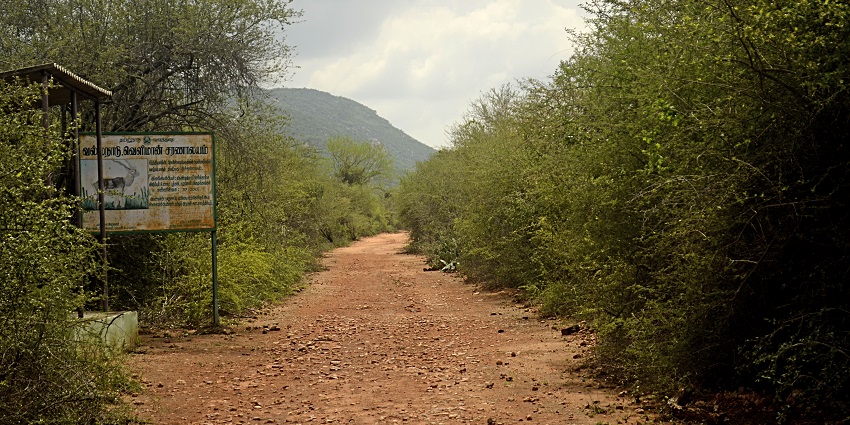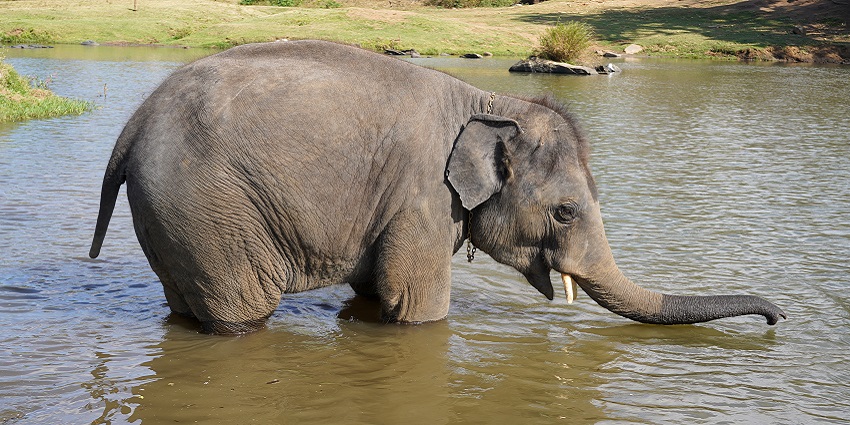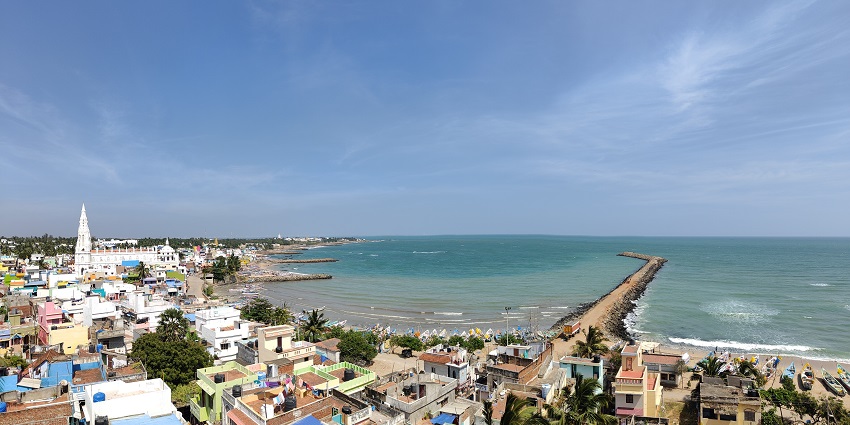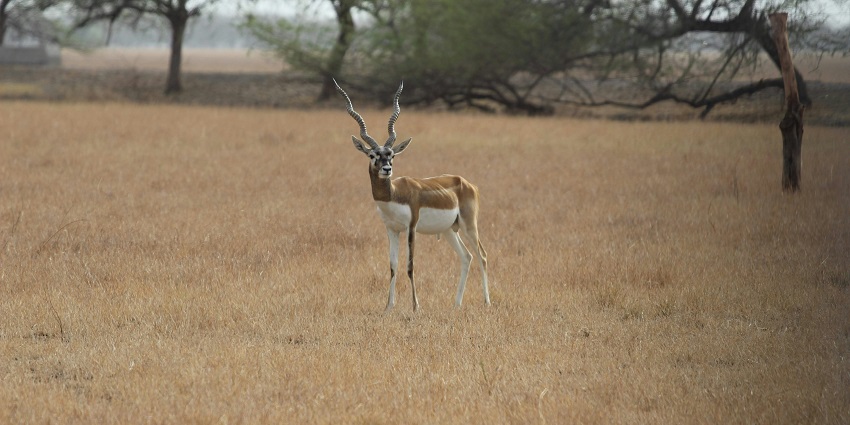Vallanadu Wildlife Sanctuary is a secret gem for nature fans and animal lovers. Covering an area of approximately 1,800 hectares, this refuge is home to different flora and wildlife, giving a rich ecosystem that includes various kinds of animals, birds, and snakes. The sanctuary is an ideal spot for eco-tourism and adventure, bringing tourists seeking a peaceful escape amidst nature. With its beautiful settings and unique wildlife, the wildlife sanctuary is an excellent location for a lovely trip. Whether you’re a bird watcher or want to enjoy the great outdoors, this refuge has something for everyone.
Location

Photo: PJeganathan / Wikimedia Commons
The wildlife sanctuary is located in Tamil Nadu, India, in the Thoothukudi district, some 20 km from Thoothukudi city. The sanctuary is easily accessible for all travellers, be it local or international. It is situated in the southern part of the country, where the varied topography has rolling hills and different landscapes, ranging from dry deciduous forests to scrublands. This sanctuary is special because it has a unique ecosystem supporting varied wildlife. In the area around the reserve, there are also pretty towns and farmlands where people can get a feel for the culture and way of life there.
Suggested Read: Places To Visit In Megamalai
How To Reach

Photo: dmncwndrlch / Pixabay / Image For Representation Only
By Air: Tuticorin Airport is the nearest airport to the wildlife sanctuary, around 25 km from the sanctuary. The airport’s connectivity with all major cities in India accessibility to the sanctuary is easily achievable. FromTaxis and other local transport are available from the airport for visitors who want to reach the forest.
By Train: The nearest railway station is Thoothukudi, which is about 20 kilometres away. The place is well-connected with most cities in Tamil Nadu and many other states. From the Thoothukudi railway station, a taxi or bus can be taken to reach the wildlife sanctuary.
By Road: The wildlife sanctuary can be easily accessed by road. Good highway conditions lead you to this sanctuary. You can drive from Thoothukudi or other nearby towns. State-run buses and private vehicles connect the sanctuary to the major cities of Tamil Nadu.
Places To Visit In And Around Vallanadu Wildlife Sanctuary
1. Vallanadu Elephant Camp

Photo: Timothy A. Gonsalves / Wikimedia Commons
The Vallanadu Elephant Camp is a significant attraction close to the wildlife sanctuary. It plays a vital role in rehabilitating and conserving elephants in that region. Visitors can understand the habits and ways of these magnificent creatures with the help of the trained staff. It runs educational programs and activities whereby visitors can feed and bathe the elephants, giving them an exceptionally memorable experience. A visit to the Vallanadu Elephant Camp is entertaining and, more so, a very enriching opportunity to learn about the importance of wildlife conservation in India.
Timings: 8 AM – 5 PM
Entry Fees: ₹100
Suggested Read: Places To Visit Near Thanjavur For Every History Buff
2. Koodankulam Nuclear Power Plant

Photo: Petr Pavlicek/IAEA / Wikimedia Commons
The Koodankulam Nuclear Power Plant is a famous place near the wildlife sanctuary and serves as an important landmark in the region. As one of the largest nuclear power plants in India, it plays a vital role in generating electricity for the southern states. The plant features an informative visitor centre where guests can learn about nuclear energy, its benefits, and safety measures. Guided tours of the facility are available, providing insights into the plant’s operations and technology.
Timings: 10 AM – 4 PM
Entry Fees: N/A
3. Thoothukudi Beach

Photo: Anton Zelenov. / Wikimedia Commons / Image For Representation Only
Thoothukudi Beach is a picturesque tourist destination near the wildlife sanctuary. The attraction of this place lies in the golden sands and the calm waters. You can swim, play beach volleyball and have a picnic too. Coconut palms line the beach;It also offers peace and quiet, which is great for relaxing. Local food stands sell snacks and fish that will make your mouth water so that tourists can enjoy the taste of this place. The sunset at Thoothukudi Beach is more gorgeous, and photographers and lovers would love to see this place.
Timings: 24*7
Entry Fees: N/A
Suggested Read: Things To Do In Megamalai
4. Kanyakumari

Photo: Yashwanthpyadav / Wikimedia Commons
One of the most significant locations close to Vallanadu is Kanyakumari, around 80 km from the wildlife sanctuary. It is renowned for its breathtaking sunsets, lively culture, and historical importance. It is located at the southernmost point of continental India. Famous sites like the Kanyakumari Temple, Thiruvalluvar Statue, and Vivekananda Rock Memorial are open for tourists to explore. With a range of neighbourhood shops and restaurants close by, the beach is a fantastic place for leisure and water sports.
Timings: 24*7
Entry Fees: N/A
5. Pazhayar River

Photo: debannja / Pixabay / Image For Representation Only
The Pazhayar River is a peaceful stream that attracts nature lovers seeking peace near the wildlife sanctuary. The river is an excellent venue that affords great solitude amidst the surroundings for picnics, birdwatching, and other natural attractions. Several species of birds typically roost on the rich banks of the river; therefore, it is a haven for a keen eye for bird watching or photography. Visitors can also use it as an area for boat rides up and down the river, thus offering a unique perspective of the local flora and fauna.
Timings: 24*7
Entry Fees: N/A
Suggested Read: Best Hill Stations Near Tenkasi For A Perfect Vacay
Where To Stay

Photo: Pixabay / Pexels / Image For Representation Only
For a comfortable stay near the wildlife sanctuary, visitors can choose from various accommodations ranging from budget hotels to eco-friendly resorts. Many hotels offer amenities such as guided tours to the sanctuary, making it easier for guests to explore the area. Staying nearby Thoothukudi is also popular, with numerous hotels and lodges catering to different preferences and budgets. Visitors can enjoy warm hospitality and delicious local cuisine while staying close to nature.
Where To Eat

Photo: Cats Coming / Pexels / Image For Representation Only
When visiting the wildlife sanctuary, you will find several dining options that serve authentic Tamil cuisine and local delicacies. Thoothukudi offers a variety of restaurants and eateries where visitors can enjoy fresh seafood, traditional curries, and street food. Local restaurants are known for their warm hospitality and flavorful dishes, providing a delightful culinary experience. Some establishments also offer vegetarian options, ensuring all dietary preferences are met. For a truly immersive experience, try some local specialties such as Meen Kuzhambu (fish curry) and Parotta with spicy gravy.
Suggested Read: Top Places To Visit Near Arunachalam
Best Time To Visit

Photo: Mangesh Dave / Unsplash / Image For Representation Only
The best time to visit the wildlife sanctuary is from October to March when the weather is pleasant and ideal for outdoor activities. During these months, moderate temperatures make it easier for visitors to explore the sanctuary and nearby attractions. Wildlife sightings are also more frequent during this period, as animals are more active in cooler weather.
Other Factors To Consider

Photo: PJeganathan / Unsplash / Image For Representation Only
Average Cost Of The Trip
The average trip cost to the wildlife sanctuary can vary based on transportation, accommodation, and dining preferences. For a day trip from Thoothukudi, expect to spend approximately ₹1,500 to ₹2,000 per person, which includes transportation, entry fees, and meals. If you plan to stay overnight, the cost may increase from ₹3,000 to ₹5,000, depending on the type of accommodation chosen.
Tips For Travellers
- Always check the timings and entry fees for the wildlife sanctuary before your visit.
- Wear comfortable clothing and sturdy shoes suitable for exploring nature.
- Carry water with you, especially during long hikes or walks.
- Observe animals from a distance and avoid feeding them.
- Bring a camera to take photos of the stunning landscapes and wildlife.
Vallanadu Wildlife Sanctuary is a captivating destination with natural beauty, diversity, and serene landscapes. Whether you’re an avid nature lover, a birdwatcher, or simply seeking a peaceful retreat, this sanctuary has something to offer everyone. For a seamless travel experience, plan a trip with TripXL, which offers tailored packages to enhance every aspect of your journey, ensuring an unforgettable adventure amidst Vallanadu’s natural beauty.
Cover Photo: Gowrisha CV / Unsplash / Image For Representation Only


 WhatsApp
WhatsApp
 Twitter
Twitter









